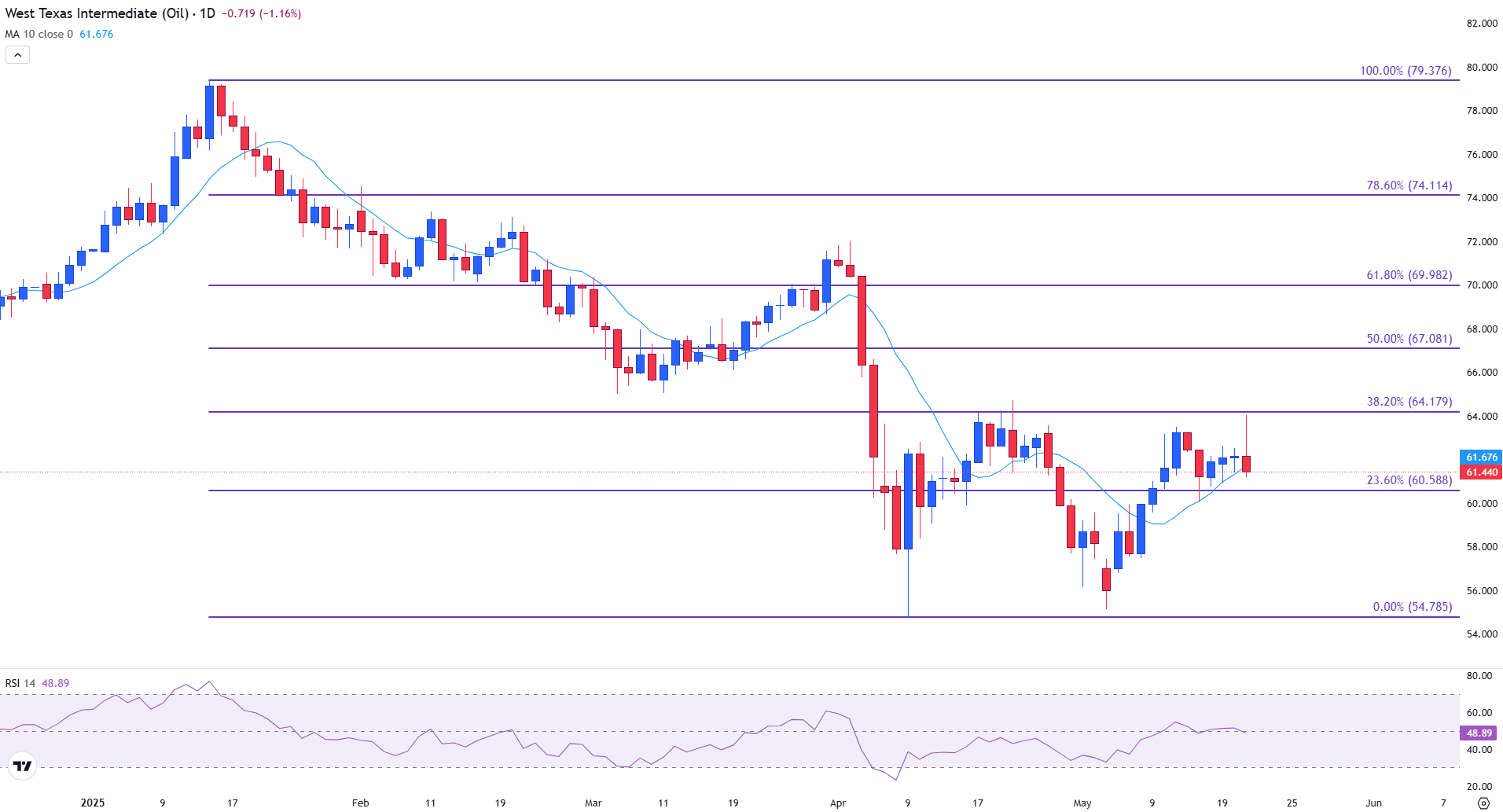WTI Crude Oil Faces Major Resistance At $64.00

Image Source: Pixabay
Oil prices have been under persistent pressure since the inauguration of United States (US) President Donald Trump in January, weighed down by a combination of recession fears, rising global supply and a softer US Dollar.
These factors have collectively contributed to renewed weakness in the liquid commodity, dampening the bullish momentum that previously supported elevated energy prices.
For West-Texas Intermediary (WTI) Crude Oil –the US benchmark extracted primarily from Texas and surrounding regions– prices found support late last year as global trade resumed and post-pandemic demand surged.
This resurgence helped lift energy prices through the final months of last year, particularly as supply remained constrained.
However, under the Trump administration, new energy policy priorities, including proposals to expand domestic oil production and ease environmental regulations, have shifted market expectations for long-term supply growth. These developments, coupled with lingering macroeconomic uncertainty and slowing growth in major economies, have altered the broader supply-demand outlook moving into mid-2025.
Adding to the downward pressure on crude, fresh data from the US Energy Information Administration (EIA) revealed a larger-than-expected build in domestic crude inventories, signaling potential demand weakness and reinforcing concerns about oversupply.
The rise in stockpiles comes amid ongoing production increases from non-OPEC players, including US shale and OPEC+, which has recently confirmed plans to ramp up output to defend market share. These supply-side pressures have further weighed on WTI, now trading below $62 per barrel.
Despite known risks surrounding the oil market, including inflation sensitivity and fiscal spillovers, geopolitical developments remain a key wildcard.
On Wednesday, reports surfaced that Israel may be preparing potential strikes on Iranian nuclear facilities, briefly pushing prices higher before gains faded in the wake of bearish inventory data. The potential for escalation in the Middle East could reintroduce risk premiums, particularly if supply routes are disrupted, though for now, the market appears more focused on structural imbalances.
WTI rally runs out of fuel below $62.00
From a technical standpoint, WTI crude recently attempted to break above the 38.2% Fibonacci retracement level ($64.179) of the January–April YTD decline.
However, the rally was capped by strong selling pressure, forming a long upper wick on the daily candlestick, a classic sign of bullish exhaustion and a potential reversal point.
This reinforces the $64.00 region as key resistance, and unless buyers can regain control above this level, near-term price action may favor further consolidation or downside movement.
The 10-day Simple Moving Average (SMA) near $61.68 is acting as dynamic support, while a clean break lower could expose the next support zone at $60.58 (23.6% Fib).
WTI Crude Oil daily chart
(Click on image to enlarge)

(This story was corrected on May 21 at 20:38 GMT to say in the headline that WTI Crude Oil faces a major resistance at $64, not $62)
More By This Author:
WTI Crude Oil Consolidates Between Key Levels As Traders Await Economic Cues
USD/JPY Lifts As Japan’s GDP Shrinks And USD Stays Supported On Inflation Fears
USD/JPY Weakens As Soft U.S. Data And Dovish Fed Tone Bolster Yen Demand
Disclosure: The data contained in this article is not necessarily real-time nor accurate, and analyses are the opinions of the author and do not represent the recommendations of ...
more


